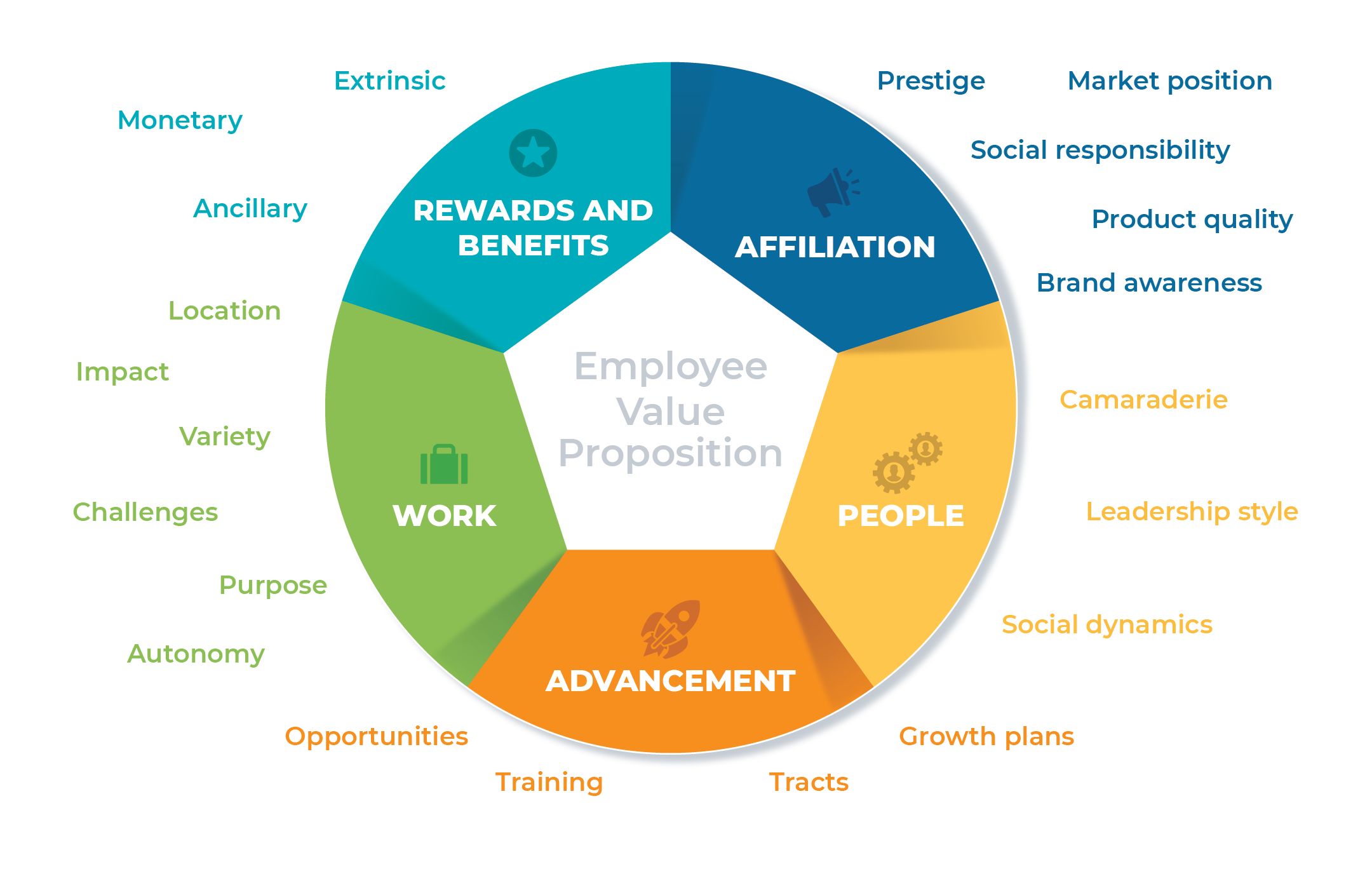Developing Your EVP
With so many options, why should employees choose your organization?
If you read our last article on employer branding, you learned it's a powerful tool more and more organizations are using to differentiate their workplaces during this historic labor shortage. And although the term comes from the days of ranchers and cattle drives, the thought and data that go into employer branding involve a lot more than a hot iron and a pair of chaps. The backbone of an effective employer brand is developing an Employee Value Proposition, or EVP. Experts offer varying opinions for the best recipe, but an EVP is usually an inventory of the following employment attributes:
- Rewards + Benefits (monetary, extrinsic, and ancillary)
- Advancement (opportunities, growth plans, tracts, and training)
- Affiliation (prestige, social responsibility, market position, product quality, and brand awareness)
- People (camaraderie, leadership style, and social dynamics)
- Work (location, impact, variety, challenges, purpose, and autonomy)
A key point to remember is that an EVP is informed, meaning the core attributes are reported as already existing, not as something to work toward.

HOW IS AN EVP CREATED?
Developing an effective EVP is not the sole responsibility of a leadership group or HR department, as their perspectives of the organization’s benefits and existing culture may not represent the viewpoints of all employees. Rather, input must be gathered from the entire group and be given careful consideration. Doing so demonstrates to employees that their opinion matters, which helps build trust in and loyalty to the organization.
HOW IS AN EVP INFORMED?
There are all kinds of ways to gather employment attributes, including:
- Internal employee-engagement surveys
- Internal wage and benefit surveys
- External wage and benefit surveys
- Entry and exit surveys
- Job applicant experience surveys
Once you’ve gathered and assessed the data, the organization’s stakeholders need to come together to determine what is working and what is not working. The positive attributes reinforce the EVP while the negative attributes become an ongoing effort informing areas of improvement. EVPs need to live and breathe, and that means revisiting the framework and gathering new data regularly. As the workplace is shaped by their input, employees’ trust and loyalty continue to grow, further strengthening your employer brand.
Once you have your EVP locked down, it’s time to think about how you deliver that message to prospects. Keep an eye out for our next post in the series “Marketing Your Culture” and sign up for our newsletter to receive helpful branding and marketing insights right to your inbox.

